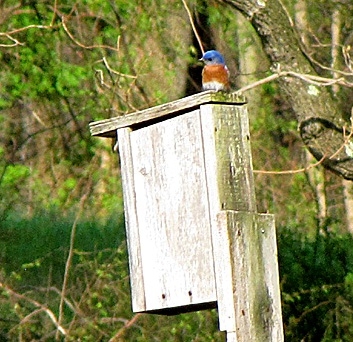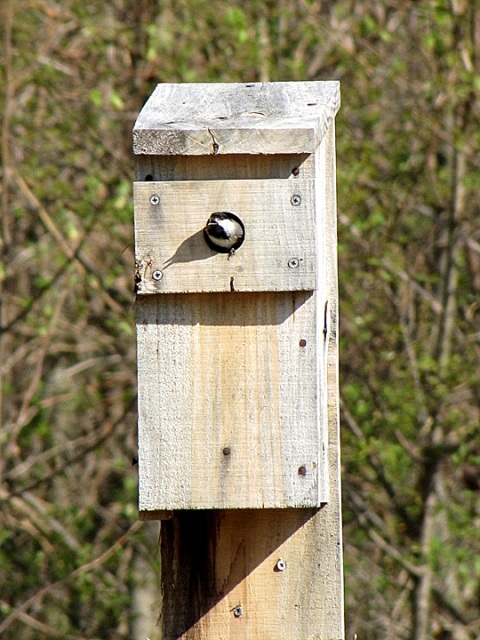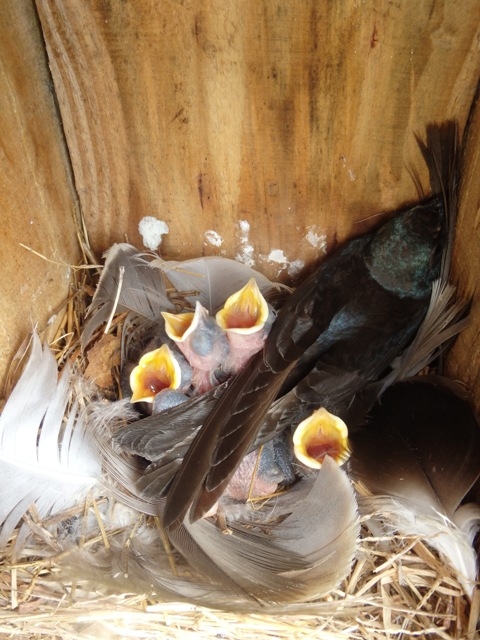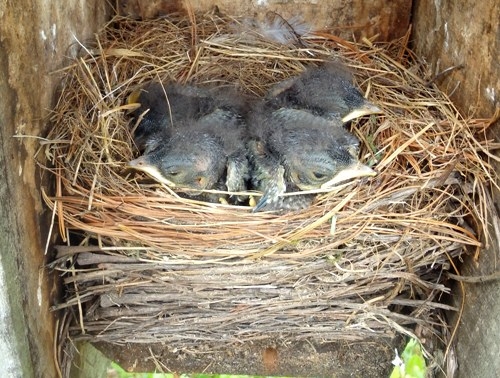2016 NLT Nest Box Review
by Tim Burris, Mariton Preserve Manager

Photo by Carole Mebus
One of my roles, in addition to managing Mariton, is collecting information about nest boxes from the other NLT preserves. Some of the Preserve Managers are very involved in the nest boxes on their preserves. Other managers utilize volunteers, including the Force of Nature, to manage their nest boxes.

Chickadee in a Mariton nest box by Carole Mebus
We often think of bluebirds when we talk about the nest box program. Bluebirds are important to Natural Lands Trust’s nest box program, but depending on the management goals of a particular preserve, other species also benefit. For instance, Mariton’s fields are pretty small. Early in the season it is good habitat for bluebirds, but later in the season it gets a little brushy for them. Chickadees often do as well as bluebirds in our nest boxes. Other preserves manage large swaths of grassland which provide a habitat that is quickly disappearing from Pennsylvania’s landscape. This benefits many bird species, and while bluebirds use the boxes, this type of habitat is ideal for tree swallows. NLT’s nest boxes provide nest sites for a variety of cavity nesting species, not just bluebirds.

Tree Swallows
In 2016, we had 15 preserves reporting nest box data. Again, a big thank you to volunteers who helped maintain boxes and monitor activity. There were 298 boxes, and 252 of them showed nesting activity.
Bluebirds nested in 134 of the boxes and produced 407 fledglings. (45% of boxes showed bluebird activity.)
Tree Swallows nested in 116 boxes (39%) and fledged 395 chicks.
House Wrens nested in 70 boxes and produced 125 fledglings. Carolina Wrens also produced 6 young from the nest boxes.
Chickadees were in 14 boxes and produced 53 young.

Bluebird chicks
You may have added up the different nests above and realized that it exceeds the 298 nest boxes that were monitored. That is because 87 of our boxes were used more than once during the season. House Wrens and Tree Swallows nest a little later in the season. So, it is pretty common for them to use a box that may have been used by Bluebirds earlier. Bluebirds often rear a second brood, generally using a different box, but sometimes reusing a box if it is cleaned out quickly. This is a very good reason to remove old nests as soon as the young leave the box.
